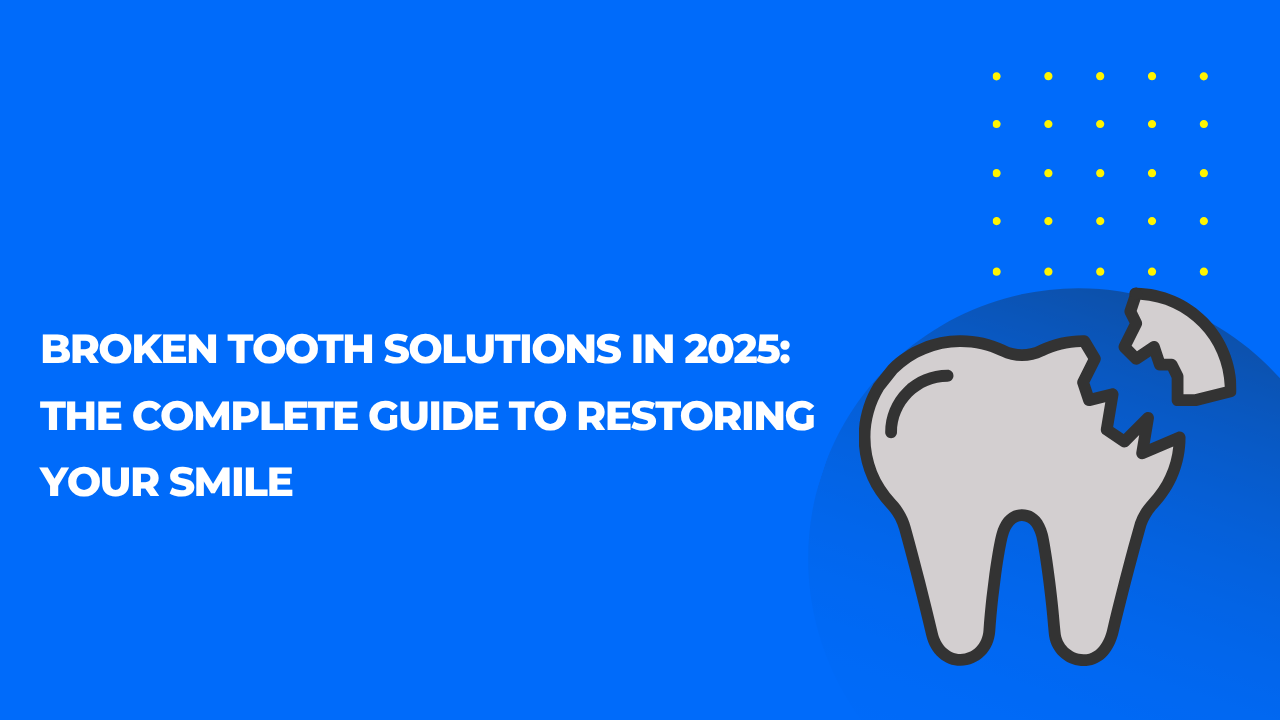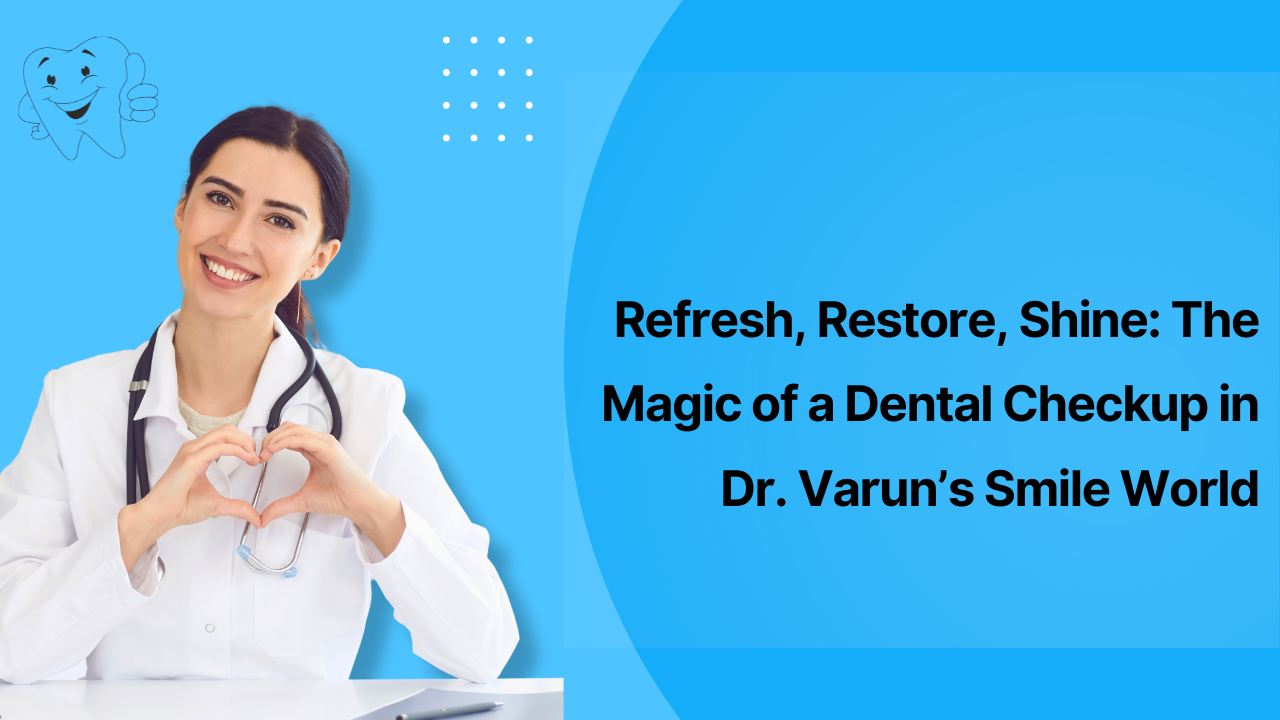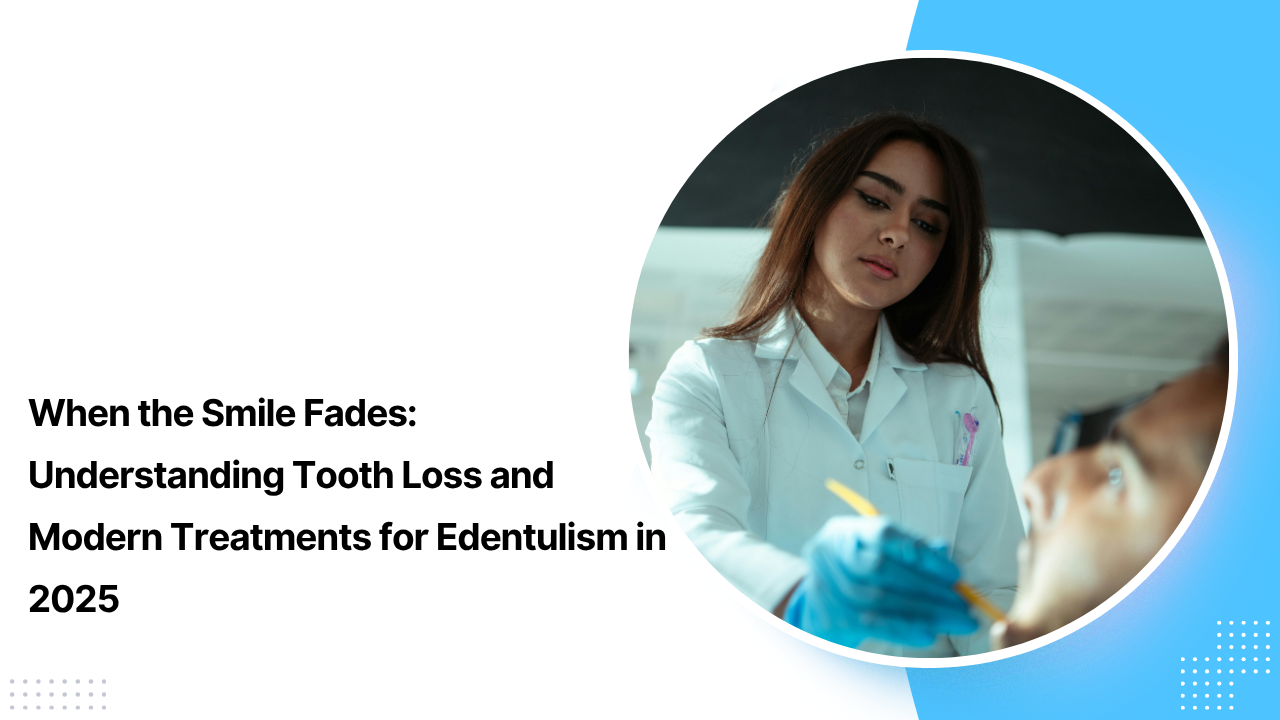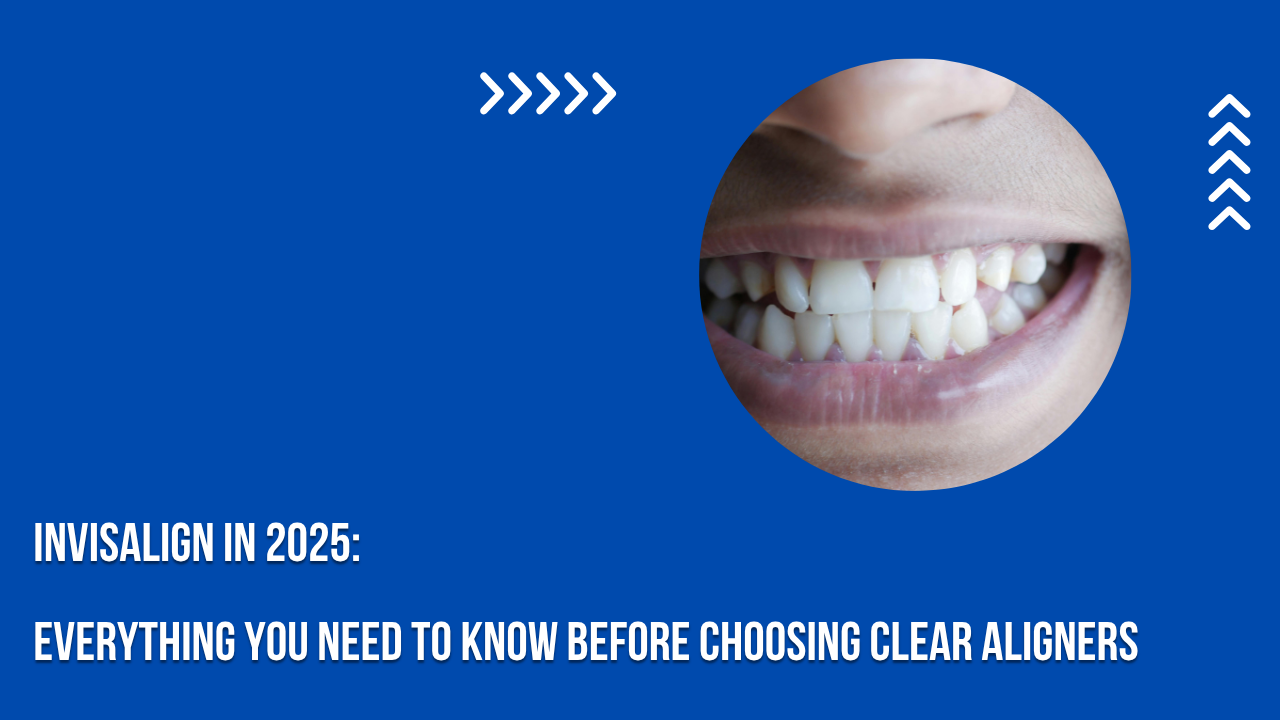Something is unsettling about feeling a sharp edge on your tooth or seeing a visible crack in the mirror. A broken tooth isn’t just a matter of appearance — it highlights how fragile our smiles truly are. In today’s world, where confidence and first impressions are more important than ever, no one wants to have a chipped, cracked, or missing tooth. Fortunately, restorative dentistry in 2025 has advanced significantly, providing treatments that are quicker, more durable, and look more natural than ever before.
This guide covers the latest and most effective methods for repairing a broken tooth, ranging from quick solutions to long-lasting restorations. Whether your tooth has a minor chip or a severe fracture, there’s a treatment designed to restore both its function and appearance.
Why Repairing a Broken Tooth Is More Than Just About Looks
It’s easy to assume a broken tooth only affects how it looks. However, the issue runs much deeper. When a tooth cracks, chips, or breaks, it can:
- Exposes sensitive inner layers, causing pain and discomfort
- Allow bacteria to enter, leading to decay or infection
- Affect your bite and ability to chew properly
- Place extra stress on neighboring teeth
- Weaken the tooth’s structure to the point it can’t be saved
Addressing the problem early protects your oral health and helps you avoid more complicated and expensive treatments later on.
Common Causes of Tooth Breakage
Although teeth are very strong, several factors can cause them to break:
- Accidents or trauma, such as falls, sports injuries, or sudden impacts
- Biting down on hard foods like ice, nuts, or candy
- Untreated tooth decay that weakens enamel and dentin
- Bruxism (teeth grinding), which causes ongoing stress and tiny fractures
- Aging restorations, like old fillings or crowns, that lose their strength
Identifying the cause helps your dentist select the best treatment and prevent future damage.
The Most Up-to-Date Ways to Repair a Broken Tooth in 2025
Dentistry has always focused on fixing teeth, but today’s treatments go beyond basic repairs. They aim to blend naturally with your teeth, preserve healthy tooth structure, and last longer than ever. Here are the top options available now.
1. Dental Bonding: Quick and Cost-Effective
Bonding remains a popular choice for fixing minor chips or cracks. A tooth-colored resin is applied, shaped to match your tooth, and hardened with a special light.
Best for: Small chips and cracks on front or less-stressed teeth
Benefits: Fast, affordable, painless, usually done in a single visit
Drawbacks: Less durable under heavy chewing and may discolor over time
In 2025, advanced nanotechnology has improved bonding materials, making them stronger and more resistant, though they still don’t last as long as crowns or veneers.
2. Veneers: Achieving Aesthetic Excellence
For teeth that are chipped, uneven, or stained, veneers provide an attractive solution. These thin layers, typically made of porcelain, are attached to the front surface of the tooth to create a flawless look.
Ideal for: Front teeth that need cosmetic improvement
Benefits: Natural appearance, resistant to stains, long-lasting
Drawbacks: Higher expense and slight removal of enamel required
Thanks to modern digital design, veneers fit precisely, making them a dependable way to restore both the appearance and confidence of your smile.
3. Crowns: Complete Coverage and Strength
When a tooth is severely damaged or structurally compromised, a dental crown is often the best choice. Crowns fully cover the visible portion of the tooth, protecting it while restoring its natural function.
Ideal for: Major fractures, teeth treated with root canals, or heavily worn teeth
Benefits: Strong, durable, and highly aesthetic with current ceramic and zirconia materials
Drawbacks: Requires reshaping the natural tooth
The introduction of same-day CAD/CAM crowns in 2025 allows patients to receive a permanent crown in just one visit.
4. Inlays and Onlays: A Conservative Approach
For damage too extensive for bonding but not severe enough to require a full crown, inlays and onlays offer a middle-ground solution. These custom restorations fit precisely into or onto the damaged area.
Ideal for: Broken cusps or larger parts of the chewing surfaces
Benefits: Preserve more of the natural tooth than crowns and are very durable
Drawbacks: Require lab work or digital milling, making them more costly than fillings
With advancements like 3D printing and digital impressions, inlays and onlays are now more accurate and accessible than ever.
5. Root Canal Therapy with Restoration
If a tooth fracture exposes the pulp (the inner nerve), root canal treatment is necessary to prevent infection. This involves cleaning out the affected tissue, sealing the tooth, and then placing a crown for long-term protection.
Ideal for: Severe fractures that reach the nerve
Benefits: Saves the natural tooth, relieves pain, and restores function
Drawbacks: Involves multiple steps, and a crown is essential for durability
Modern root canal procedures are much more comfortable, utilizing advanced imaging and rotary instruments to make the process faster and more predictable.
6. Dental Implants: The Long-Term Solution
When a tooth cannot be saved, extraction followed by a dental implant is the preferred option. Implants replace the entire tooth, including the root, providing stability and a natural appearance.
Ideal for: Irreparable fractures or missing teeth
Benefits: Prevent bone loss, blend seamlessly with natural teeth, and last for decades
Drawbacks: Higher cost, requires surgery and healing time
With AI-assisted planning and minimally invasive techniques, implants in 2025 are safer and quicker, offering a permanent solution even for the most challenging cases.
7. Temporary and Emergency Repairs
While permanent treatments require planning, temporary restorations can smooth sharp edges or cover exposed areas until definitive care is available. These provide short-term protection rather than a permanent fix.
The Future of Restorative Dentistry
What distinguishes modern dentistry today is not only the range of available treatments but also the advanced technology behind them. In 2025, dental care is characterized by:
- Digital workflows enabling same-day crowns and veneers
- 3D printing for enhanced precision and quicker results
- Biomimetic dentistry aimed at preserving natural tooth structure
- AI-powered planning that forecasts bite stress and customizes restorations
- Environmentally friendly practices promoting sustainable dentistry
These advancements enhance patient comfort and ensure that restorations look, feel, and function like natural teeth.
Selecting the Best Option
The ideal treatment depends on various factors, including:
- The extent of the tooth damage
- The tooth’s location (front or back)
- The amount of healthy tooth structure remaining
- Personal preferences regarding function, appearance, or both
- Budget and time constraints
Your dentist will suggest a personalized plan, but understanding your options helps you actively participate in making informed decisions.
Maintaining Restored Teeth
Fixing a broken tooth is just the beginning; protecting the restoration is key to its durability.
- Brush twice daily using fluoride toothpaste
- Floss carefully to prevent plaque buildup
- Avoid chewing very hard foods
- Use a night guard if you grind your teeth
- Attend regular dental check-ups
With proper care, restorations can last many years, sometimes even decades.
Preventing Future Damage
The best approach to broken teeth is prevention. Simple habits can make a significant difference:
- Wear protective gear during sports activities
- Be cautious when biting into hard foods
- Manage teeth grinding with a night guard
- Treat cavities early to prevent enamel weakening
- Maintain overall oral health through regular cleanings
Final Thoughts
A broken tooth can feel discouraging, but in 2025, restorative dentistry transforms this challenge into an opportunity for an improved smile. Whether it’s a quick bonding, a custom crown, or a cutting-edge implant, there’s a solution tailored to every need.
The most important steps are to act promptly and choose the right treatment with your dentist’s guidance. Thanks to today’s technology, repairing a broken tooth is not just about fixing damage—it’s about restoring confidence, function, and long-term oral health.
If you have a chipped, cracked, or broken tooth, rest assured that modern dentistry offers effective solutions. The future of your smile is stronger, brighter, and healthier than ever before.




